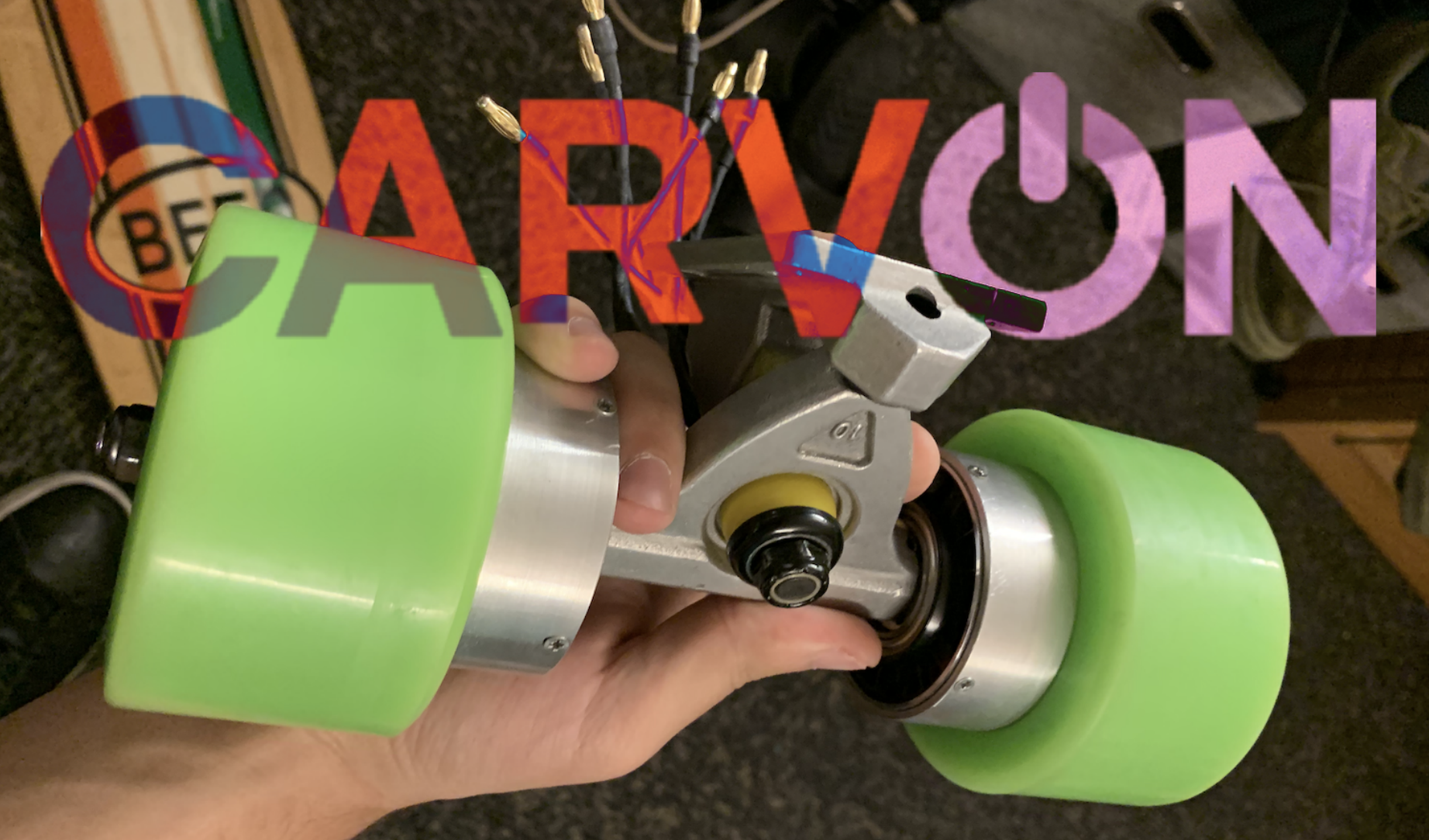
It’s no secret that Carvon is a dead company brought down by its own failure to communicate and deliver to customers. Before its demise, Carvon was known for putting out some of the most competitive hub motors on the market. It sold popular single drive and dual drive configurations and solved the thin urethane problem far before big companies even realized it was an issue. Esk8 news managed to snag a dual drive sample of original Carvon prototypes, and today we’re reviewing this now historic piece of technology as if it had just been released.

Design
The OG Carvon hubs are different from most early hub motors. While many designs had the entire motor within the wheel, Carvon crafted these with sk3 motors that are smaller in diameter but longer in stator length. The motors were first partially disassembled and then reassembled with lathe modifications to fit on a special rear truck. It doesn’t appear to be a Caliber truck, however the Carvon rear truck is very similar and therefore acts in an almost identical way. Material was removed near the axle in order to expose more of it and allow the modified motors to slide on. Urethane that similarly resembles the shape of an Abec wheel was added near the edge of the motor can. It was then glued on and slid into place with the rest of the assembly on each side. The motors are held in place with a nut and lock-washers.
Solving the Thin ‘thane Problem
The small diameter of the sk3 motors allow for much thicker urethane, as well as the crafting of an outer lip to keep it from sliding off in the outwards direction. This keeps the ride comfy and normal compared to the awful ride quality of cheap hubs, and it’s also a big reason as to why Carvon had early success.

The smaller diameter of the motor also led to Carvon not including screws to keep the urethane in place. Epoxy-like glue was used instead, which means that when the motors get hot the thane can still slip and slide inwards on the truck.

This issue was solved with later versions of the hub motors, but in this version I simply added duct tape and that worked just fine.
Long Term Durability
It’s very rare to see anyone selling older Carvon hubs. In fact, the only sale of these hubs earlier than V4 in the last 6 months is the set that I quickly grabbed. There’s a very simple reason for this: the hubs hold up. People who purchased early Carvon hubs tend to keep them because they work for years and thousands of miles with minimal maintenance. They’re also very powerful and low profile compared to most motor setups, so it’s hard to get tired of how they look or perform.
I’ve been spending the last few weeks riding the hell out of the OG hubs, and they have had no issues apart from the urethane slippage (which was a 2-minute fix). They work fine uphill, they are manageable on horrible streets, and they’ve even survived the copious amounts of snow that I’ve been stupidly riding through around Denver.
Conclusion

If you somehow find a single or dual version of these things from before V3, I highly suggest you pick them up as soon as possible. They are great workhorses, and because Carvon doesn’t make them anymore they are also a great piece of esk8 history. Most of the V4s for sale are priced around $700, and earlier versions like the sample that we got ahold of sold for $300. So, finding older versions will be the more affordable way to go. Either way it’s a worthwhile investment even if it’s into a company that faded away.
Rating
Quality: 7/10
Price: 7/10
Feel: 6/10
Aesthetic: 7/10
Reliability: 8/10
Durability: 8/10
That brings the total to 43/60.
- Enertion – A Eulogy. - February 1, 2020
- EnertionBoardsUSA – A New Hope - November 11, 2019
- OG Carvons – A Comprehensive Review - November 2, 2019
